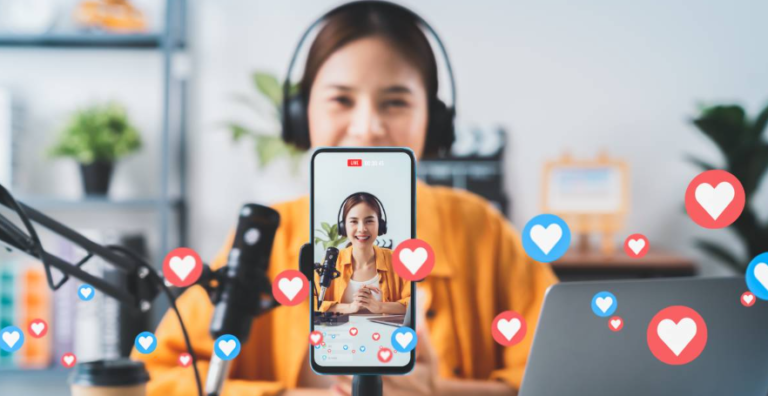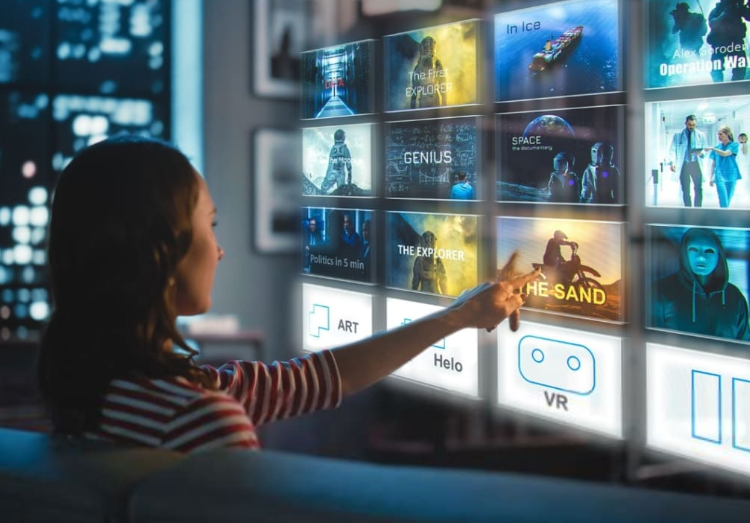How Online Streaming Is Changing the Entertainment Industry
The entertainment world has transformed dramatically over the past decade, thanks largely to the rise of online streaming. From blockbuster movies to indie series, music, and live events, streaming services have redefined how content is created, delivered, and consumed worldwide. This shift has reshaped the industry’s landscape, affecting everything from traditional TV to music, cinema, and even celebrity culture.
In this article, we explore the many ways online streaming is revolutionizing entertainment, the technology behind it, the changing behaviors of audiences, and what the future might hold.
Introduction to Online Streaming and Its Rise
Online streaming allows users to watch or listen to content in real-time over the internet without downloading files. The convenience of streaming—paired with the rise of high-speed internet and smart devices—has made it a preferred method of consuming media. This innovation is more than just a new distribution channel; it’s a fundamental shift in how entertainment is experienced.
See also: tvpromisecom
A Brief History of Entertainment Consumption
Traditionally, people consumed entertainment via scheduled TV broadcasts, movie theaters, and physical media like DVDs or CDs. Consumers had little control over timing and limited choices. The internet began changing this dynamic with downloadable content, but it was the arrival of streaming that truly empowered viewers with instant, on-demand access.
How Streaming Technology Works
Streaming technology breaks content into small data packets sent continuously to devices. Content delivery networks (CDNs) and adaptive bitrate streaming ensure smooth playback, adjusting video quality based on the user’s internet speed. This infrastructure supports millions of simultaneous viewers worldwide without buffering or interruptions.
Leading Streaming Platforms
Key players like Netflix, Amazon Prime Video, Disney+, Hulu, and Spotify have dominated the streaming market. Each offers unique content and features, driving innovation and competition. Their vast libraries attract diverse audiences, shaping what gets produced and promoted.
Impact on Traditional Television and Cable
The rise of streaming has led to widespread “cord-cutting,” where viewers cancel cable or satellite TV subscriptions. Traditional broadcasters are losing market share and adapting by launching their own streaming services or partnering with existing platforms to stay relevant.
Changes in Viewing Habits and Consumer Behavior
Streaming has put viewers in control—watching what they want, when they want, and on any device. Mobile viewing, multi-screen usage, and personalized content recommendations have become standard. This flexibility has redefined entertainment as a personal, anytime experience.
The Binge-Watching Phenomenon
On-demand streaming has fueled binge-watching, where viewers consume entire seasons or series in one go. This trend influences storytelling techniques, encouraging serialized content with cliffhangers to keep audiences hooked.
Original Content Production by Streaming Giants
Streaming platforms invest billions in producing exclusive, original content. Netflix, for example, spends heavily on shows and movies that can’t be found elsewhere. This strategy attracts and retains subscribers while allowing more creative freedom and diverse storytelling.
Democratization of Content Creation
Streaming reduces barriers for independent filmmakers, musicians, and creators to reach global audiences. Platforms support niche genres and experimental formats, enabling voices that might have been overlooked in traditional media to thrive.
Global Reach and Localization
Streaming services transcend borders, offering localized subtitles, dubbing, and region-specific content. This globalization increases cultural exchange and broadens entertainment horizons for viewers everywhere.
Monetization Models: Subscriptions, Ads, and Hybrids
Most streaming services operate on a subscription (SVOD) model, but ad-supported (AVOD) and hybrid models are growing. These options cater to different user preferences, allowing platforms to diversify revenue streams and reach wider audiences.
Effect on Movie Theaters and Film Industry
Streaming challenges the traditional theatrical release window, with some films debuting simultaneously online. This shift has sparked debate over cinema’s future but has also opened new avenues for filmmakers and audiences alike.
Live Streaming and Real-Time Experiences
Live events like sports, concerts, and gaming have embraced streaming, offering real-time interaction and global accessibility. This trend enhances engagement and creates new entertainment formats blending broadcast and social media.
Impact on the Music Industry
Streaming has shifted music consumption from owning albums to accessing vast libraries via subscriptions. While revenue models have changed, artists gain unprecedented reach, and listeners enjoy personalized playlists and instant discovery.
AI and Algorithms in Streaming
Artificial intelligence powers recommendation engines that personalize content suggestions, improving user experience and increasing platform engagement. These algorithms analyze viewing habits, preferences, and trends to curate relevant entertainment.
Challenges for Streaming Platforms
Despite its success, streaming faces challenges: content oversaturation, high production costs, complex licensing deals, and user privacy concerns. Platforms must balance innovation with sustainable business practices.
Piracy and Content Protection
Streaming platforms invest heavily in digital rights management to combat piracy. Although piracy remains a challenge, stronger security measures and legal actions aim to protect creators’ intellectual property.
Environmental Considerations
Streaming consumes significant data and energy, raising concerns about its environmental footprint. Industry leaders are exploring greener data centers and optimizing delivery methods to reduce impact.
Legal and Regulatory Landscape
Governments worldwide are developing regulations around content censorship, copyright laws, and competition among streaming services to protect consumers and creators alike.
Future Trends: Interactive and Immersive Streaming
Emerging technologies such as virtual reality (VR), augmented reality (AR), and interactive storytelling promise even deeper audience engagement and novel entertainment experiences.
Influence on Celebrity and Influencer Culture
Streaming and social media platforms have given rise to new types of celebrities and influencers who build direct relationships with fans, bypassing traditional media gatekeepers.
Integration with Social Media
Streaming content often integrates with social media, boosting discoverability and real-time interaction. Viral moments and online discussions enhance the cultural impact of shows and music.
Opportunities for Independent Artists and Producers
By offering accessible distribution, streaming empowers indie creators to reach audiences worldwide, build communities, and monetize their work without needing large-scale studio backing.
Data Analytics Driving Content Strategy
Streaming platforms use data analytics to identify popular trends, tailor marketing, and make informed decisions about content investment and development.
Conclusion: Streaming’s Ongoing Transformation of Entertainment
Online streaming has revolutionized how we access, enjoy, and create entertainment. Offering unparalleled choice, flexibility, and innovation, it continues to reshape the industry, breaking down old barriers and opening new creative horizons. As technology and viewer preferences evolve, streaming will remain at the forefront of entertainment’s future.
Frequently Asked Questions (FAQs)
Q1: How has online streaming affected traditional TV?
Streaming has led to a decline in traditional TV viewership as consumers prefer on-demand, ad-free experiences.
Q2: Are movie theaters going extinct because of streaming?
While theaters face challenges, they still offer unique social and immersive experiences, maintaining a vital role.
Q3: How do streaming platforms generate revenue?
Mostly through subscriptions, advertising, and sometimes transactional video on demand (TVOD).
Q4: Is streaming better for the environment than physical media?
Streaming reduces physical waste but requires significant energy for data transmission, posing environmental challenges.
Q5: Can independent creators succeed on streaming platforms?
Yes, streaming democratizes content distribution, allowing independent artists to find global audiences.




